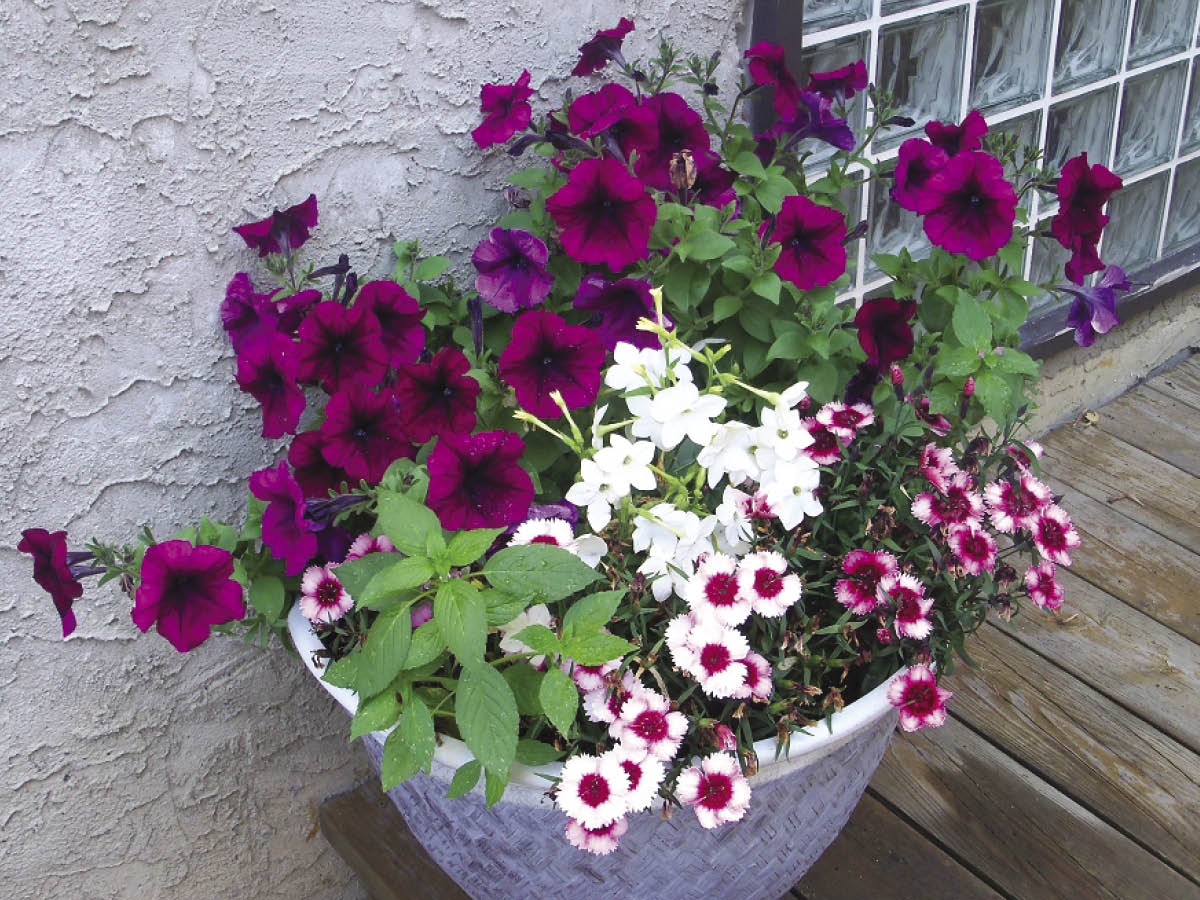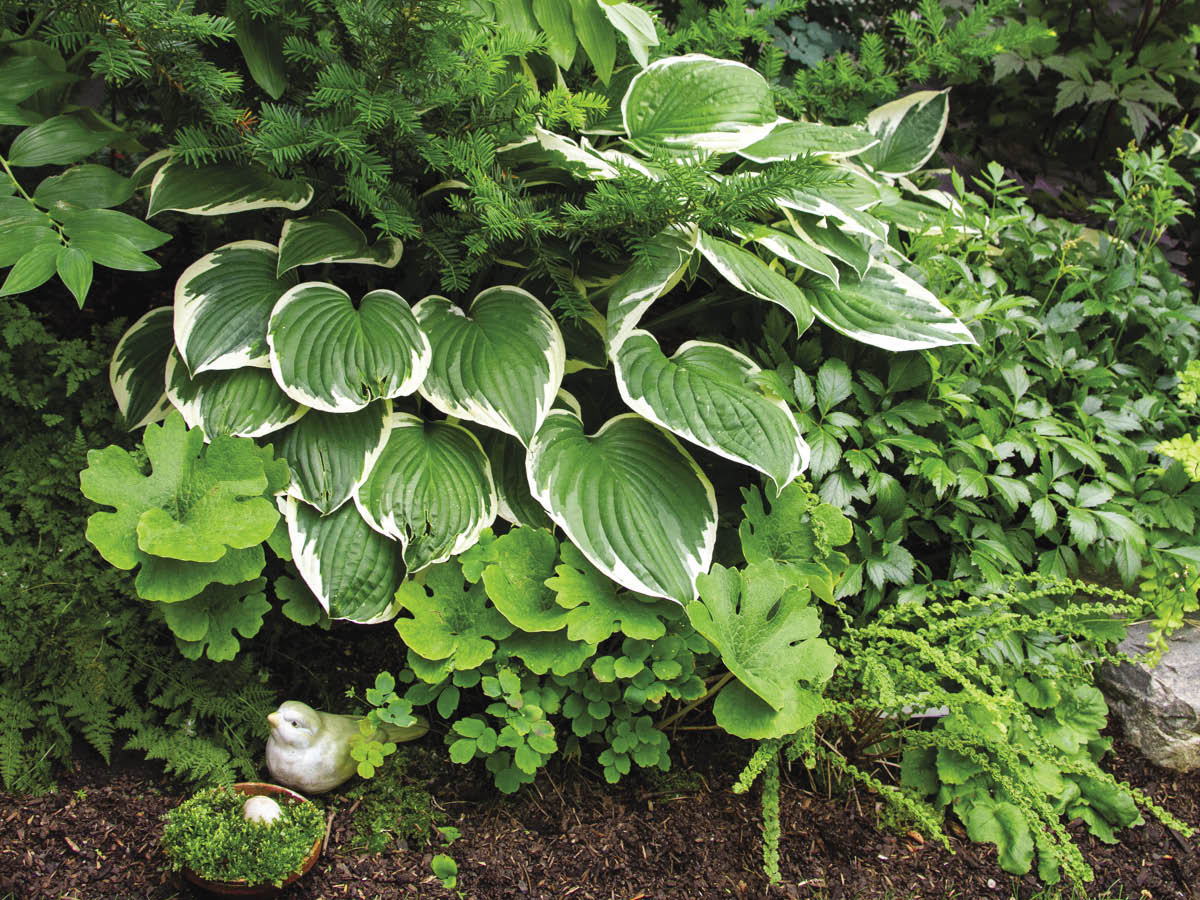Using Colour in the Garden

Photo: Pixabay
In 1642, Sir Isaac Newton first published his findings about the colour spectrum—the red, orange, yellow, green, blue, indigo, and violet that we learned in school—and we still use to describe the colours we see.
Colour can manipulate our perception of space. Cool colours give the impression that a space appears farther away. Place cool or softer coloured plants near the back of a bed to make it look more expansive. Bright, warm colours will capture attention front and centre and appear to bring a space closer.

Photo: Julie Barringer
The amount of light that your plants are situated in will cause colours to appear differently. Warm colours usually appear darker in low light. If you love to entertain outdoors in the evening, use creams, light yellows, and whites to make your garden stand out. Plant flowers of these colours near your house on your deck or patio for greatest effect.
The colour of your house will provide the biggest backdrop for your garden, so choose your paint wisely! If you want your garden to shine, choose a neutral colour for the exterior of your house. The colours you select for hardscape features in your garden will also play into your style. What about the mulch you choose or the pathways you set down? Do you want your containers to make a bold statement or to look classically elegant?
Think in drifts of colour. A specimen here and there of multiple colours can seem chaotic. Showstopping groupings of two or three colours will easily achieve a “wow!” factor. Sometimes, however, a mixed bag of colour can be highly effective. If you’ve ever hiked in a meadow filled with wildflowers, you’ll know what I mean. The repetition of certain species and colours unifies the space.
Monochromatic (one colour) gardens can be extremely dramatic and fascinating, and they focus on plant texture and form over colour. Bold colours can be tricky to work with in small gardens, and are sometimes best showcased as small, intense pops, such as the deep orange of a terra cotta container or a striking border of bright red tulips in spring.

Photo: Deborah Maier
Don’t focus simply on flowers! Foliage plays a significant role in adding colour to your garden. Varying shades of green act as a perfect neutral base for all other colours in the garden and, if you want to try something different, consider selecting plants with variegated leaves, perhaps something in blue, grey, or gold? Colour may also be seasonal and fleeting, for example the reds, oranges, bronzes, and yellows of autumn.
Plant stems, bark, or fruit can offer another effective source of colour—perhaps you’ve been stopped in your tracks by the shimmering white trunk of paper birch trees, or the brilliance of red osier dogwoods against winter snow.
To learn more about gardening in Calgary visit the Calgary Horticultural Society website at calhort.org.
Explore a little colour theory in your garden
Warm Colours
Long associated with intensity and passion, red is a colour that demands attention. Too much red can quickly dominate and overtake the garden, so go easy on it. Excellent colour companions include silver, white, and purple.
Pink has a cheerful, comforting,
old-fashioned feel, a sense of the cottage garden about it. Pink looks amazing with yellow, lime green, blue, or white. The only colour that doesn’t shine next to it is red.
Orange is perfect if you want to capture a sense of the tropics in your garden. Pair it with red, blue, purple, or lime green.
Yellow is a sunny, happy colour that brings a smile to most gardeners’ faces. Try it with purple, dark red, and variegated foliage.
Cool Colours
Blue is synonymous with calm, cool tranquillity. Mix it with purple, grey, green, silver, and pink.
Purple is a rich, sophisticated colour with plenty of depth. Combine it with yellow, orange, and pink.
Whether you want a calm, cool garden or a vibrantly invigorating one, plan to add colour to your garden this year!
Sheryl Normandeau
Calgary Horticultural Society

